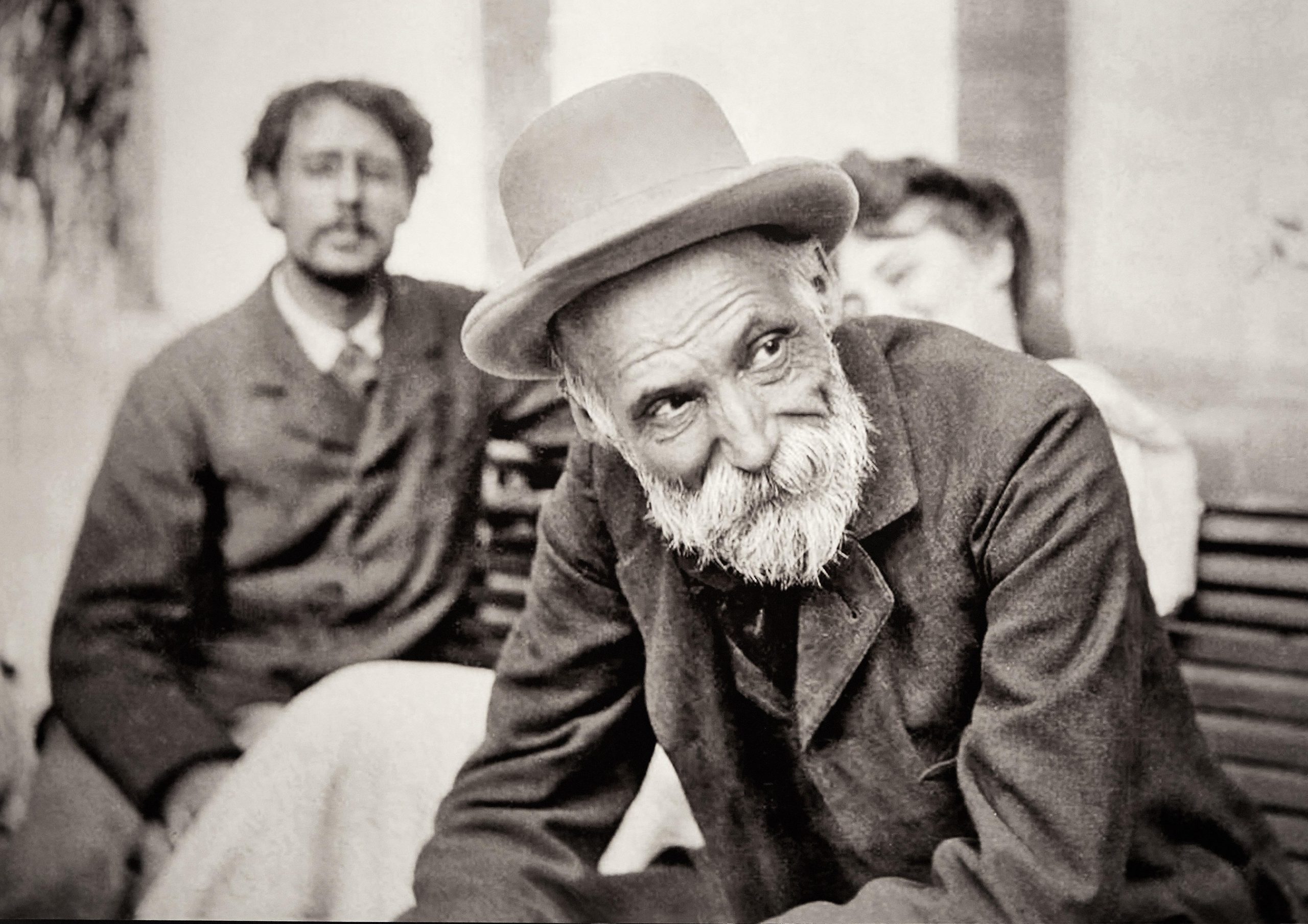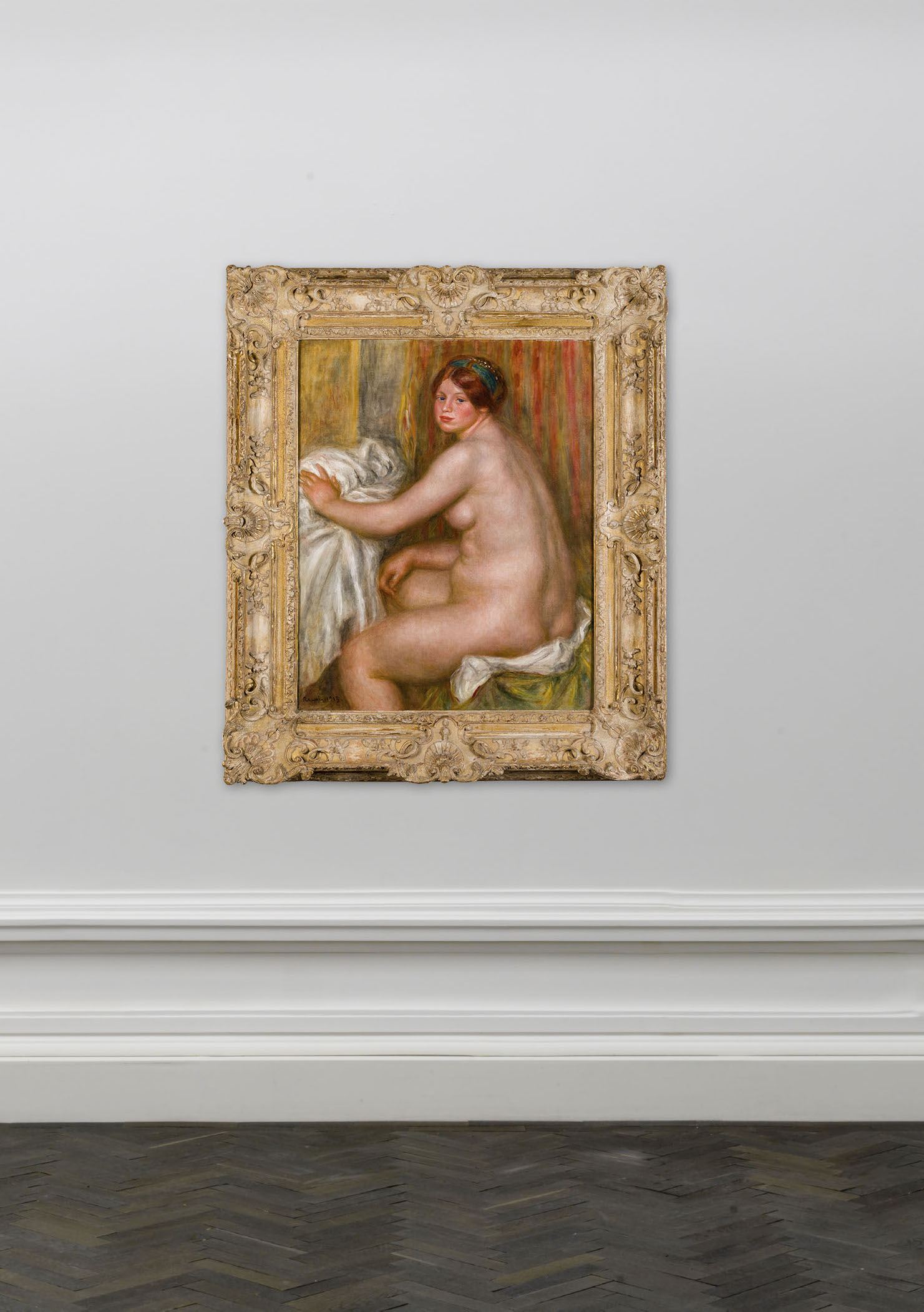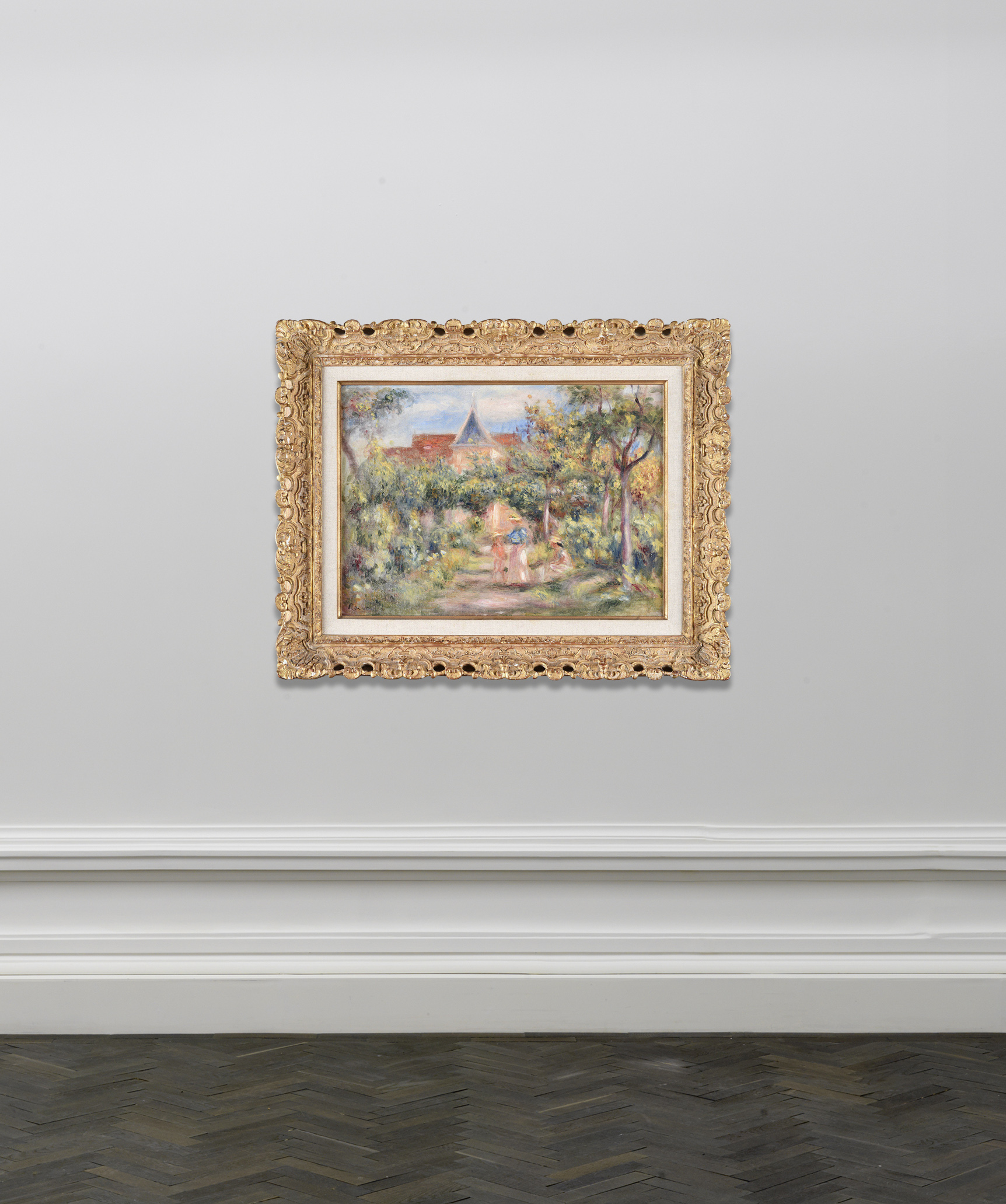Jardin du Peintre à Essoyes, 1909
Pierre-Auguste Renoir
Jardin du peintre à Essoyes from 1909 depicts Pierre-Auguste Renoir’s residence in Essoyes, a small town in the Champagne region of France. The painter acquired the house in 1894, the same year that his wife, Aline (née Charigot), gave birth to the couple’s second son, Jean. Leaving Paris indefinitely, the family settled down in Aline’s native town, the warmer climate being kinder to Renoir after he had contracted rheumatoid arthritis in 1892. By 1909, the artist relied on Aline to tie the brush to his fingers to be able to paint. This dreamlike scene depicts three characters



